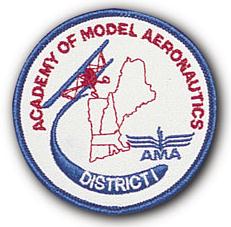Q2 - What should I be looking for when selecting an AMA club and flying site before joining? There are over 100 AMA-Charted club flying sites in New England (District 1) that may provide a variety of supportive and enjoyable environments to pursue your aeromodelling passion. Don't hesitate to ask AMA DISTRICT OFFICERS questions, or use the CLUB FINDER to find club near you. |
When choosing an AMA Club:
Location and Convenience
Use AMA's CLUB FINDER tool to locate clubs in District 1. Consider the driving distance to their meeting
locations and flying fields.
Club Culture and Atmosphere
Beginner Friendliness Look for clubs that explicitly welcome beginners. Some clubs have dedicated instructors, mentorship programs (like the AMA Introductory Pilot program), or beginner training aircraft. Ask the club members about their experience with newcomers.
Interests and Activities
Determine what type of aeromodelling interests you most (e.g., fixed-wing, multirotors/drones, gliders, scale, aerobatics) and try to find a club whose members share those interests and align with yours.
Club Size and Demographics
Some beginners prefer smaller clubs, while others enjoy larger groups with diverse experience levels.
Meeting Frequency
How often does the club meets, the typical format of meetings (business, social, technical), and if these suit you.
Membership Requirements and Fees
Inquire about club dues/fees and what they cover. Find out if there are specific requirements for new members to participate in certain activities.
Communication and Organization
A well-organized club with a website, email list, newsletter, Facebook, is easier to engage with.
Visit Multiple Clubs
If possible, attend a meeting or a flying session as a guest at a few clubs to learn about the culture and flying site before joining
When Considering the Club's Flying Site(s):
Location and Accessibility
Consider the distance and ease of access to the flying field. Is it easy to find? Is the road to the field
well-maintained? Think about the operating hours and days of the flying site. Do they align with your availability?
Safety, Layout and Size of the Field
Ensure the flying field is large enough and appropriately laid out for the type of aircraft you plan to fly safely. Larger and faster models require more open space.
Runway Conditions
Observe the condition of the runway (grass, paved, or other surface). Is it well-maintained and suitable for takeoffs and landings?
Safety Lines and Spectator Areas
A well-defined flying site will have designated safety lines and spectator areas to protect non-pilots.
Obstructions
Note any trees, power lines, buildings, or other obstructions around the flying field that could pose a hazard.
Wind Conditions
If possible, observe the typical wind conditions at the field. Some sites may be more prone to strong or turbulent winds.
Permitted Activities
Check if the club's flying site allows the types of aircraft you are interested in (e.g., electric, nitro, gas, jets, multi-rotors). Some fields have restrictions based on noise or safety concerns.
Amenities
Consider any amenities available at the flying site, such as covered shelters, picnic tables, charging stations, or restrooms. While not essential, these can enhance your flying experience.
Field Rules
Understand and be comfortable with the club's specific field rules and operating procedures, which are in addition to the AMA Safety Code. The more restrictive rules and procedures (sometimes required for
various reasons) apply.
Proximity to Neighbors: Be aware of the proximity of the flying site to residential areas and any noise restrictions that might be in place. Maintaining good relationships with neighbors and the community is
crucial for the long-term viability of a flying site.


